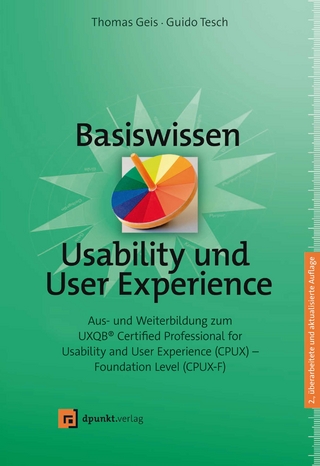
Engineering the User Interface
Springer London Ltd (Verlag)
978-1-84996-735-8 (ISBN)
Digital Divide (DD) is a term that defines the division between people, commu- ties, states, countries, etc. with respect to the access to the new Information and Communication Technologies (ICTs). Nowadays, it is essential to have tech- logical skills to work in a variety of jobs (i. e. administration, education, etc. ). Moreover, ICTs have become ubiquitous and they affect almost every aspect of our daily life. The way in which people face the task of using ICTs varies depending on a plethora of variables. The most analysed ones are the technological literacy and the educational level. These are two very important factors that strongly affect the success of the individuals in accessing ICTs. Unfortunately, these are not the only variables to consider. Some people suffer from mental and physical disabilities that are real impediments to access ICTs, and they must be studied in detail. How can we help disabled people to access ICTs? Can public telecentres deal with this task? Can the ICTs be used to improve the accessibility of disabled people? Which projects aim to reduce the digital divide? Are they addressed to disabled people? These are some of the questions that we will try to answer, at least partially, in this chapter. We believe that governments must invest to avert the DD, but they are not the only actors involved in this scenario.
Creativity Support Tools: A Grand Challenge for HCI Researchers.- Integrating Learning Processes Across Boundaries of Media, Time and Group Scale.- Optimal Cost Haptic Devices for Driving Simulators.- Interference of Auditory Information with Haptic Perception of Stiffness in Virtual Reality.- Towards Implicit Interaction in Ambient Intelligence through Information Mosaic Roles.- Towards the Achievement of Natural Interaction.- Science Learning in Blind Children through Audio-Based Games.- Towards the Introduction of Accessibility Resources in Public Telecentres.- Access Control Model for Collaborative Business Processes.- An Ontology to Model Collaborative Organizational Structures in CSCW Systems.- Semantic Web Query Authoring for End-Users.- A Methodological Approach for Building Multimodal Acted Affective Databases.- Audiovisual Analysis and Synthesis for Multimodal Human-Computer Interfaces.- Creation and Evaluation of a Virtual and Collaborative Playground.- Presentation Adaptation: Results from a Case Study.- Improving a Zoom+Pan Interface with Overview+Detail or Focus+Context Features: A Comparative Evaluation.- aCaSo: A Card Sorting Management #x0026; Analysis Tool.- Intelligent User Interfaces: Past, Present and Future.
| Erscheint lt. Verlag | 13.10.2010 |
|---|---|
| Zusatzinfo | XII, 277 p. |
| Verlagsort | England |
| Sprache | englisch |
| Maße | 155 x 235 mm |
| Themenwelt | Mathematik / Informatik ► Informatik ► Betriebssysteme / Server |
| Informatik ► Software Entwicklung ► User Interfaces (HCI) | |
| ISBN-10 | 1-84996-735-0 / 1849967350 |
| ISBN-13 | 978-1-84996-735-8 / 9781849967358 |
| Zustand | Neuware |
| Haben Sie eine Frage zum Produkt? |
aus dem Bereich


